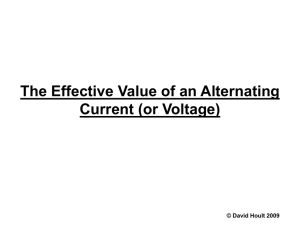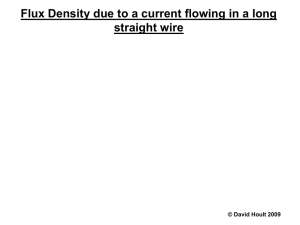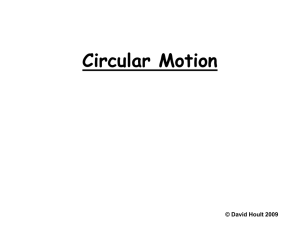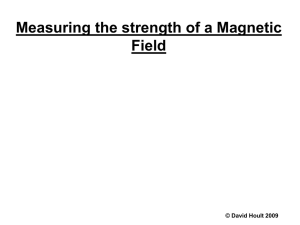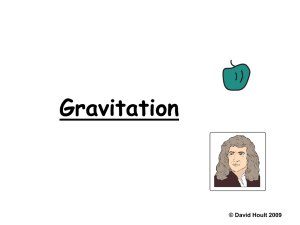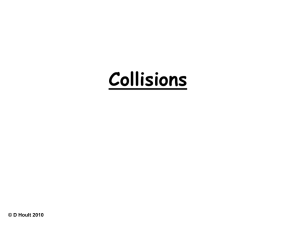Kepler PowerPoint
advertisement
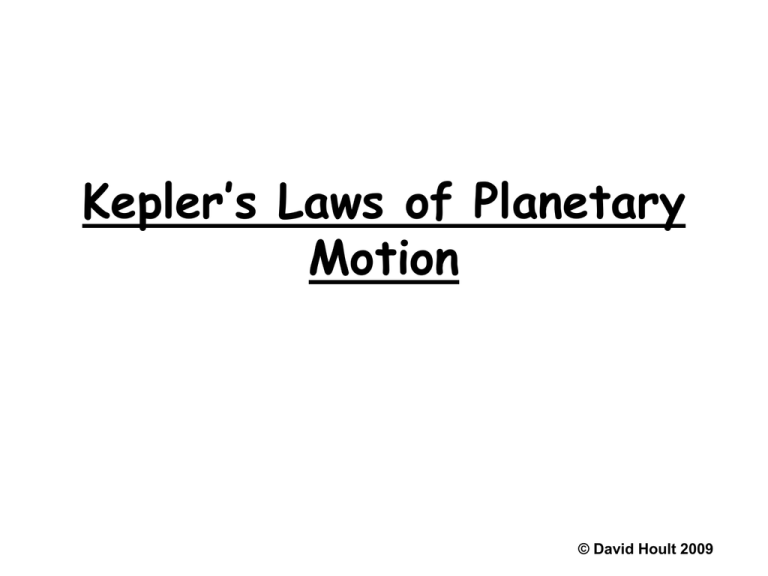
Kepler’s Laws of Planetary Motion © David Hoult 2009 © David Hoult 2009 © David Hoult 2009 © David Hoult 2009 © David Hoult 2009 The eccentricity of an ellipse gives an indication of the difference between its major and minor axes © David Hoult 2009 The eccentricity of an ellipse gives an indication of the difference between its major and minor axes The eccentricity depends on the distance between the two points, f (compared with the length of the piece of string) © David Hoult 2009 eccentricity = distance between foci / major axis © David Hoult 2009 eccentricity = distance between foci / major axis The eccentricity of the orbits of the planets is low; their orbits are very nearly circular orbits. © David Hoult 2009 Law 1 Each planet orbits the sun in an elliptical path with the sun at one focus of the ellipse. © David Hoult 2009 Mercury 0.206 © David Hoult 2009 Mercury Venus 0.206 0.0068 © David Hoult 2009 Mercury Venus Earth 0.206 0.0068 0.0167 © David Hoult 2009 Mercury Venus Earth Mars 0.206 0.0068 0.0167 0.0934 © David Hoult 2009 Mercury Venus Earth Mars Jupiter 0.206 0.0068 0.0167 0.0934 0.0485 © David Hoult 2009 Mercury Venus Earth Mars Jupiter Saturn 0.206 0.0068 0.0167 0.0934 0.0485 0.0556 © David Hoult 2009 Mercury Venus Earth Mars Jupiter Saturn Uranus 0.206 0.0068 0.0167 0.0934 0.0485 0.0556 0.0472 © David Hoult 2009 Mercury Venus Earth Mars Jupiter Saturn Uranus Neptune 0.206 0.0068 0.0167 0.0934 0.0485 0.0556 0.0472 0.0086 © David Hoult 2009 Mercury Venus Earth Mars Jupiter Saturn Uranus Neptune Pluto 0.206 0.0068 0.0167 0.0934 0.0485 0.0556 0.0472 0.0086 0.25 © David Hoult 2009 ...it can be shown that... © David Hoult 2009 minor axis major axis = 1 - e2 where e is the eccentricity of the ellipse © David Hoult 2009 minor axis major axis = 1 - e2 where e is the eccentricity of the ellipse which means that even for the planet (?) with the most eccentric orbit, the ratio of minor to major axis is only about: © David Hoult 2009 minor axis major axis = 1 - e2 where e is the eccentricity of the ellipse which means that even for the planet (?) with the most eccentric orbit, the ratio of minor to major axes is only about: 0.97 © David Hoult 2009 In calculations we will consider the orbits to be circular © David Hoult 2009 Eccentricity of ellipse much exaggerated © David Hoult 2009 © David Hoult 2009 © David Hoult 2009 © David Hoult 2009 © David Hoult 2009 © David Hoult 2009 Law 2 A line from the sun to a planet sweeps out equal areas in equal times. © David Hoult 2009 Law 3 The square of the time period of a planet’s orbit is directly proportional to the cube of its mean distance from the sun. © David Hoult 2009 r3 = a constant T2 © David Hoult 2009 Mm F = G r2 © David Hoult 2009 Mm F = G r2 F = m r w2 © David Hoult 2009 Mm F = G r2 F = m r w2 © David Hoult 2009 Mm F = G r2 GMm = 2 r F = m r w2 m r w2 © David Hoult 2009 Mm F = G r2 F = m r w2 GMm = 2 r m r w2 2p w = T © David Hoult 2009 r3 T2 = GM 4p2 © David Hoult 2009 r3 T2 = GM 4p2 in which we see Kepler’s third law © David Hoult 2009
